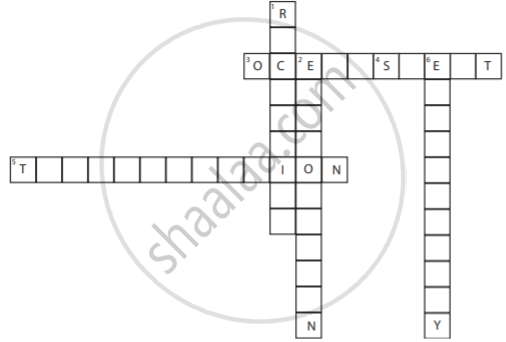Advertisements
Advertisements
Question
Which of the following are not the liquid forms of water?
(i) Snow
(ii) Lake water
(iii) River water
(iv) Water vapour
(v) Ice
Choose the correct combination from the options below
Options
(i), (iv) and (v)
(i) and (ii)
(ii) and (iii)
(iv) only
Solution
(i), (iv) and (v)
Explanation:
Snow and ice are solid forms whereas water vapour is the gaseous form of water.
APPEARS IN
RELATED QUESTIONS
Name two processes responsible for the formation of clouds.
What happens to the water in a wet cloth?
List out some other benefits of rain water harvesting.
Discuss with your friends.
Rain water harvesting has an important role to protect our environment.
Water becoming water vapour on heating is called evaporation.
What are the different stages of water cycle?

CROSSWORD
DOWN
1. A method of water conservation.
2. Process of getting water vapour from sea water.
6. Water stored in dams is used for the generation of ______.
ACROSS
3. is a large body of non-potable water found in nature.
4. In summer, the body loses water as ______.
5. Plants undergo ______ and contribute to the water cycle.
The ice sheets from the north and south poles and the icecaps on the mountains, get converted into water vapour through the process of ______.
Take out a cooled bottle of water from refrigerator and keep it on a table. After some time you notice a droplets of water around it. Why?
______ is the chemical formula of water.
Each day, we lose a little more than a cup of water when we ______.
1 inch of rainfall on a 2000 sq. ft. roof is equal to 4,800 liters of water.
The water cycle does not involve which of the following?
Which of the following inhibits the seepage of rainwater into the ground?
Explain the three stages of the water cycle.
In which of the following case evaporation of water will be slowest?
“Catch water where it falls” is the basic idea behind
Draw a diagram to show how sea water reaches a lake or pond.
Explain the process of rooftop rain water harvesting with the help of a suitable diagram.
Name three Biogeochemical cycles.
